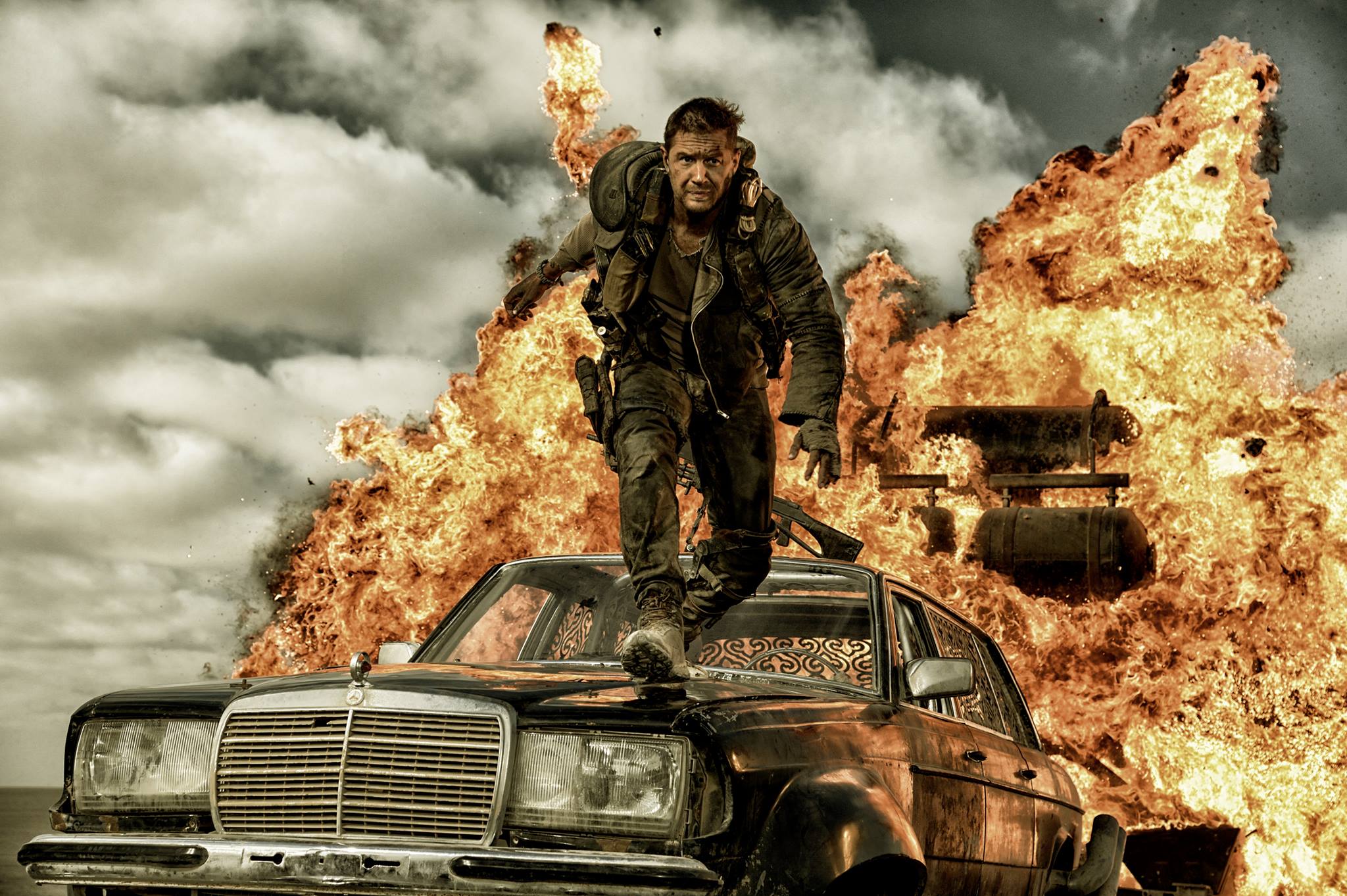The 10 Best Post-Apocalyptic Stories (And What They Teach Us About Humanity)


In an era where machines roam the land and mankind is no longer the dominant species, a young hunter named Aloy embarks on a journey to discover her destiny.
If a dystopia is an imagined oppressive or unstable society, then a post-apocalyptic story takes place after a catastrophe has wiped out civilisation altogether. We’re drawn to uninviting fictional worlds for a number of reasons; for some it’s about reflecting on humanity as we know it and for others it’s about confronting terrifying futures that promise a glimpse into what it’d be like to rebuild global communities.
So what is it that actually makes for an engaging and powerful post-apocalyptic story? Whether it be film, video games or literature, the best stories are hinged on the idea that Earth is no longer ours and it’s our quest to discover our ultimate destiny. One such example is PlayStation 4 exclusive Horizon Zero Dawn.
Machines roam the land and mankind is no longer the dominant species. Gamers adopt the persona of female protagonist Aloy whose mission it is to survive in the unforgiving wilds. By inviting us into a world suspended between an ancient past and an undiscovered future, Horizon Zero Dawn delivers on our desire to escape reality and play a part in solving fictional mysteries.
But our fascination with post-apocalyptic stories goes way back. Here are ten of the grimmest… and most hopeful.
I Am Legend, Richard Matheson, 1954
A global pandemic has turned people into vampires — but our hero, Robert Neville, is mysteriously immune. Alone in LA (or New York, in the 2007 Will Smith adaptation), Neville spends his days slaying vamps and researching the plague. But — big twist! — the vampires are building a new society. To them, Neville is a feared monster — a new legend. This story isn’t just about the loneliness of being humanity’s final survivor. It’s about the monstrosity of seeking to destroy what you don’t understand.
The Chrysalids, John Wyndham, 1955
After an nuclear “Tribulation” wiped out the “Old People”, a fundamentalist Christian farming society believes only absolute genetic purity can prevent another apocalypse. Accused mutants are killed, or banished to the lawless “Fringes”. The Chrysalids reveals both the atomic-age fear of genetic abnormalities and the ugliness of bigotry. Embracing diversity creates a better world — 12-toed Sophie and telepathic siblings David and Petra represent evolution, not destruction.
Z For Zachariah, Robert C. O’Brien, 1974
This classic sci-fi novel offers a feminist twist on the ‘omega man’ story: if the last man on Earth were an abusive creep, would you stick with him to keep the human race going? (The 2015 film adaptation turns this dilemma into a love triangle.) Teenage Ann Burden lives alone on her family farm, which is spared the effects of nuclear fallout. She’s overjoyed to meet John Loomis, a scientist wearing a radiation-proof suit. But when Loomis starts trying to control Ann, she steals his suit and sets off to find other survivors. Men threaten paradise; women seek the future.
The Stand, Stephen King, 1978
An epic clash between good and evil occurs amid the ruins of an America ravaged by a superflu called “Captain Trips”. King rallies a huge cast of characters to either the 108-year-old spiritual prophet Mother Abagail, or a malevolent demonic creature that appears as a hippie cowboy named Randall Flagg. King’s vivid, detailed psychological sketches empathise with every character’s experiences — both happy and traumatic. We all have free will; but goodness requires self-sacrifice and co-operation, while evildoers are weak, selfish and fearful.
Mad Max, George Miller, 1979
Miller combined his experience as an emergency doctor treating car crash victims with 1970s fears that skyrocketing oil prices would make petrol the world’s most fought-over commodity. Over four films, nihilistic Max Rockatansky avenges his murdered family by helping other downtrodden survivors escape road gangs of savage oppressors. Once a highway patrol officer, he’s the closest thing to a force of justice. In a world gone mad, Max is the sanest.
The Road, Cormac McCarthy, 2006
McCarthy’s novel seems unrelentingly grim. An unspecified cataclysm has blotted out the sun, killing almost all life; the survivors have largely reverted to cannibalism. But a father tenderly cares for his son as they travel south. He insists they’re “the good guys” because they “carry the fire” — a metaphor for the memory of human kindness. The Road isn’t so grim after all, because it shows love can survive even the most hopeless circumstances.
World War Z, Max Brooks, 2006
Yeah, there are survivalist zombie classics — George Romero’s Dawn Of The Dead; the graphic novel and TV sensation The Walking Dead; or Danny Boyle’s gritty 28 Days Later. But Max Brooks’ oral history-style novel panoramically surveys different nations’ responses to a zombie pandemic, exploring social and geopolitical shifts forced by the crisis. From new political systems to mutual nuclear destruction and global refugee flows, World War Z’s scope is so broad that the 2013 Brad Pitt film can only depict a tiny slice. Luckily, this year there’s a sequel.
Children Of Men, Alfonso Cuarón, 2006
In a world desolated by global infertility, a ruthless anti-refugee government rules a failing, isolationist England. (Sound familiar?) When cynical bureaucrat Theo learns from his activist ex-wife Julian that an African refugee girl named Kee is pregnant, he escorts Kee and her baby to a rescue ship off the coast – at first reluctantly, then heroically. The film’s lesson is that humanity’s future lies in the arms of society’s least privileged and most dispossessed.
WALL-E, Andrew Stanton, 2008
Centuries after earth has choked on the garbage generated by corporate behemoth Buy’N’Large, a busy little trash-compacting robot keeps working. WALL-E sentimentally saves the treasures he finds – including a seedling! Then he falls in love with EVE, a sleek vegetation-spotting probe who arrives to retrieve the plant. WALL-E is a fable of consumer complacency. Its quirky machines remind us (along with the apathetic consumers aboard the starship Axiom) of what’s truly precious – our planet.
Snowpiercer, Bong Joon-ho, 2013
Decades after a failed attempt to counteract global warming plunged the world into a new ice age, an ark-like train called Snowpiercer circumnavigates the globe. Its luxurious front carriages are reserved for the rich, while squalid conditions prevail in the overcrowded tail. Rebellion is brewing, led by Curtis and masterminded by Gilliam. But what if the ‘revolution’ is just a distraction that sustains the system? In our world, too, social control often masquerades as freedom.
–
Feature image: Mad Max: Fury Road/Warner Bros. Entertainment Inc.
—
Want to escape to a distant future and experience the next era of mankind? Take things to the next level by exploring the post-post-apocalyptic world of Horizon Zero Dawn. The game is exclusive to PlayStation®4 and available for PS4™ and PS4™Pro. Learn more here.